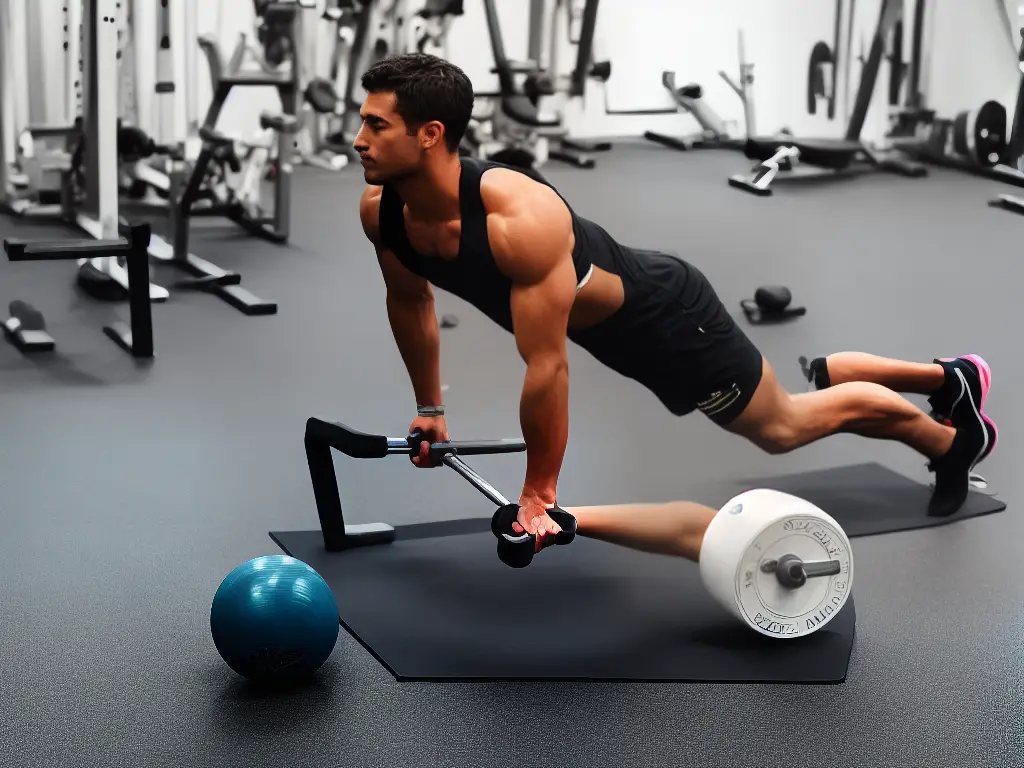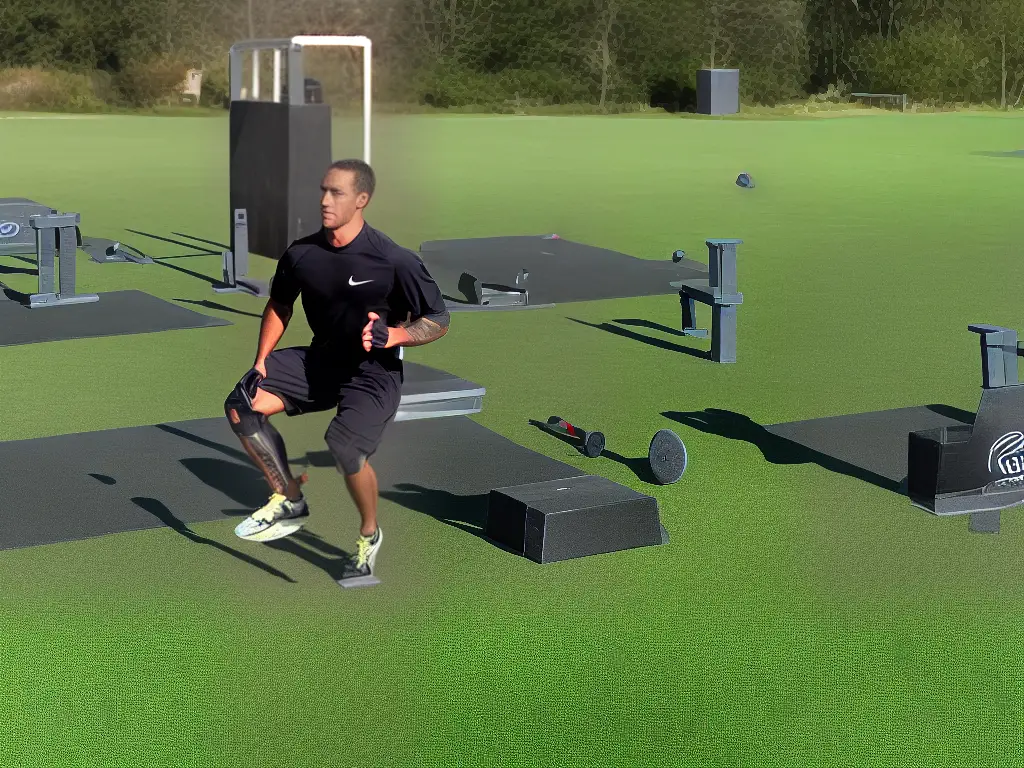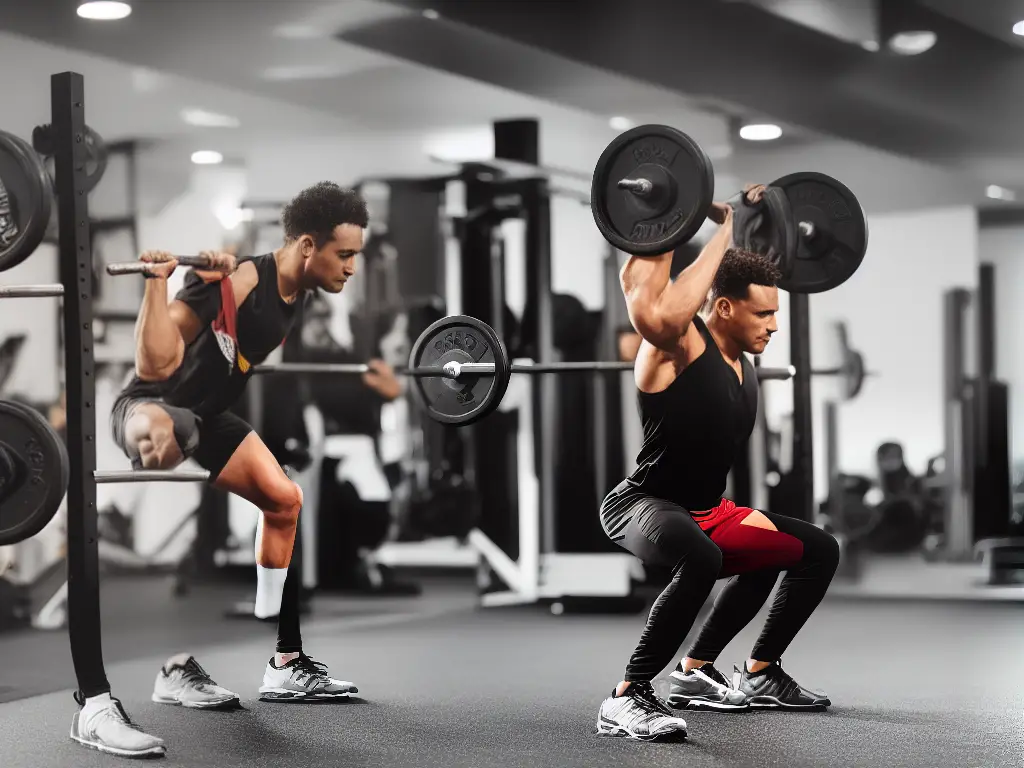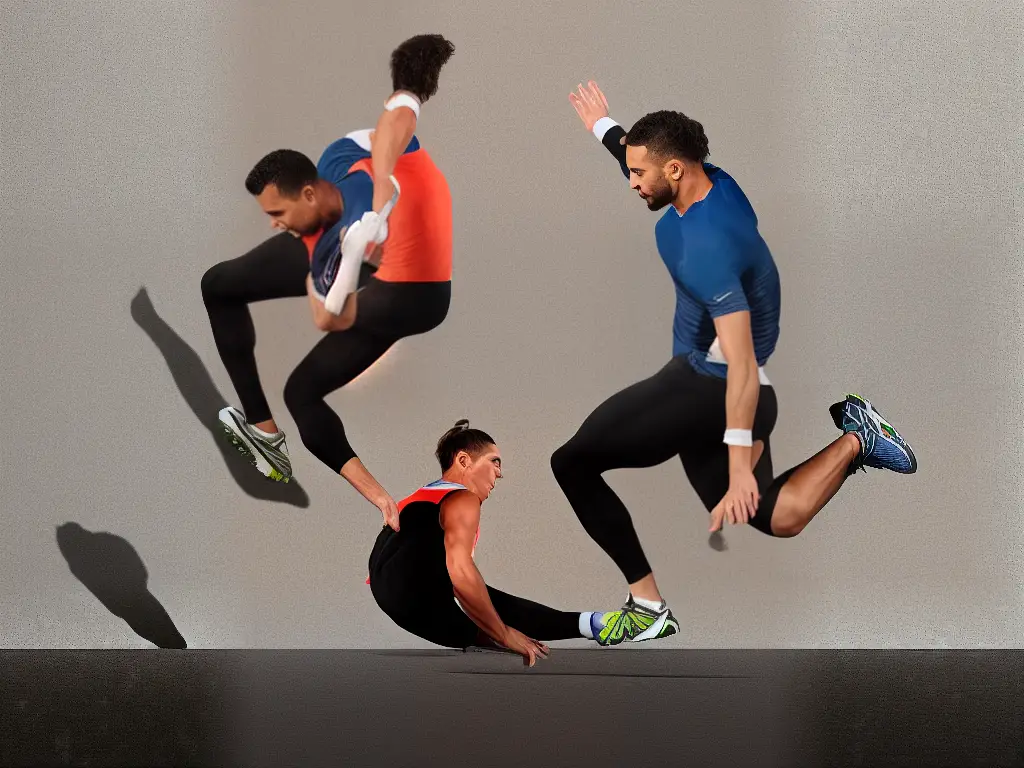Strength training for runners is an essential component of any runner’s training program, whether you’re a recreational jogger or a competitive athlete. By incorporating specific exercises and routines, you can improve your performance, reduce the risk of injury, and ensure that you’re getting the most out of your running practice. This article will guide you through understanding the importance of strength training for runners, as well as provide you with practical advice and exercises to maximize your running potential.
Importance of Strength Training for Runners
Strength training is a vital component of a well-rounded running routine, offering numerous benefits to both novice and experienced runners. By incorporating strength training exercises into your workout regimen, you can improve your running performance, prevent injuries, and boost your overall endurance. In this guide, you will learn about the importance of strength training for runners and how to incorporate it into your routine.
Benefits of Strength Training for Runners:
- 1. Injury Prevention: Strength training helps to reduce the risk of injuries by enhancing muscle strength, flexibility, and balance. It targets the muscles and tendons used during running, fortifying them to withstand the repetitive impact of running, ultimately resulting in fewer injuries.
- 2. Improved Running Economy: A crucial aspect of running is the ability to maintain an efficient pace while conserving energy. Strength training aids in enhancing running economy by improving muscle power and enabling smoother movement when running. This translates into the ability to run longer distances with less fatigue.
- 3. Increased Power and Endurance: Strength training stimulates muscle growth and development, leading to enhanced power and endurance capabilities. This increased strength will allow you to generate more force when pushing off the ground and maintain a stronger pace throughout your run.
- 4. Better Performance: Incorporating strength training into your routine can help you achieve better race times and overall running performance. Stronger muscles contribute to increased stability and improved running form, which is essential to optimize running efficiency and reduce energy waste.
- 5. Enhanced Core Stability: A strong core is a vital component of maintaining proper running form and avoiding injuries. Strength training exercises, such as planks and leg raises, can help to develop a stable core, leading to enhanced balance and coordination.
How to Incorporate Strength Training into Your Running Routine:
- Schedule strength training sessions: Allocate time for at least two strength training sessions per week, preferably on non-consecutive days. This allows for adequate recovery time between sessions and helps to prevent overuse injuries.
- Focus on compound exercises: Incorporate compound exercises into your routine, as these movements work multiple muscle groups simultaneously. Examples of compound exercises include squats, lunges, push-ups, and deadlifts.
- Don’t neglect the lower body: It’s important to include lower body exercises in your strength training regimen, as these muscles play a crucial role in running performance. Exercises like calf raises, lunges, and squats can help to improve lower body strength and enhance running form.
- Variety is key: Switch up your strength training routine regularly to avoid plateaus and continue challenging your muscles. Experiment with various exercises, weights, and rep ranges to keep your body guessing and prevent adaptation.
- Start slow and progress gradually: If you’re new to strength training, it’s essential to start with lighter weights and focus on proper form. As your strength increases, gradually increase the weights to continue challenging your body without risking injury.
Conclusion: Incorporating strength training into your running routine is essential for optimizing performance, reducing injury risks, and improving overall endurance. Start by scheduling regular strength training sessions, focusing on compound exercises, and progressing gradually to reap the benefits of a well-rounded running routine. With consistent effort, you’ll notice improvements in your running abilities and accomplish your running goals with greater ease.

Running Specific Strength Exercises
Strength training for runners focuses on enhancing the muscles that are crucial for improving our running performance while also reducing the risk of injury. Follow these essential strength training exercises designed specifically for runners:
- Squats:
Squats are a fantastic exercise for runners, as they target multiple muscle groups, including the quadriceps, hamstrings, glutes, and the core.Instructions:
- Stand with your feet hip-width apart, toes pointing forward.
- Lower your body by bending your knees and pushing your hips back, as if you’re sitting in a chair.
- Keep your chest high and your back straight.
- Pause when your thighs are parallel to the ground or lower if possible.
- Slowly rise back to the starting position.
- Lunges:
Lunges engage the glutes, hamstrings, and quadriceps, which help propel runners forward.Instructions:
- Stand tall with your feet hip-width apart.
- Take a big step forward with one foot, bending both knees to lower your body.
- Ensure your front knee stays aligned with your front foot and doesn’t pass your toes.
- Push through your front heel and straighten your legs to return to your starting position.
- Repeat on the other side.
- Leg Press:
This exercise strengthens the quadriceps, hamstrings, and glutes.Instructions:
- Position yourself on the leg press machine with your feet hip-width apart on the platform.
- Lower the safety bars and push the platform away from you, keeping your back pressed against the seat.
- Slowly lower the platform by bending your knees and bringing them towards your chest.
- Push the platform back up to the starting position. Make sure not to lock your knees as you straighten your legs.
- Calf Raises:
Calf raises target the calf muscles (gastrocnemius and soleus), which are vital for efficient running.Instructions:
- Stand with your feet hip-width apart, either on the floor or an elevated surface, such as a step or platform.
- Raise your body by lifting your heels, shifting your weight onto the balls of your feet.
- Slowly lower down to your starting point.
- For an added challenge, try single-leg calf raises by lifting one foot off the ground and performing the exercise with one leg at a time.
- Single-Leg Deadlifts:
This movement strengthens the hamstrings, glutes, and hips while improving balance and stability.Instructions:
- Stand on one leg with the other foot hovering slightly above the ground.
- Engage your core and slowly lower your upper body forward while simultaneously focusing on extending the floating leg behind you.
- Keep your back straight and your hips level with the ground.
- Lower your body as far as you can without rounding your back or experiencing discomfort in your hamstring.
- Push through your supporting foot and return to the starting position. Complete the desired number of reps before switching to the other leg.
Remember to incorporate these exercises into your training routine 2 to 3 times per week, aiming for 3 sets of 8 to 12 repetitions per exercise. Always warm up before beginning your strength training routine to prevent injury and promote flexibility. Additionally, be sure to prioritize proper form over the amount of weight lifted. This will ensure that your muscles are targeted effectively, and the risk of injury is minimized.

Core Strength and Stability
Developing a strong core is crucial for runners as it helps improve running form, posture, and overall stability. A strong core can also help prevent injuries. In this guide, we will discuss the importance of core strength and stability for runners and share key exercises such as planks, Russian twists, and bird dogs.
Importance of Core Strength and Stability for Runners
- Improved Running Form and Posture – A strong and stable core allows you to maintain better running form and posture, which can lead to more efficient running and less strain on your muscles and joints.
- Enhanced Stability – A strong core keeps your body stable as you run, helping you maintain balance and control.
- Injury Prevention – By strengthening your core, you can reduce the risk of injuries related to muscle imbalances and poor form.
- Better Performance – A strong and stable core allows you to generate more power and speed, leading to improved running performance.
Essential Exercises for Building Core Strength and Stability
-
Planks
A fantastic exercise for building overall core strength and stability, planks target the rectus abdominis, lower back, and oblique muscles.
Instructions:
- Begin by lying face down on the ground with your elbows bent and directly under your shoulders.
- Push up onto your toes and forearms, keeping your body in a straight line from head to toe.
- Engage your core and hold the position for 30 seconds to one minute. You can increase the duration as you get stronger.
- Make sure to breathe during the plank and keep your neck and spine neutral.
-
Russian Twists
This exercise targets the obliques and helps improve rotational core strength, which is essential for maintaining balance and stability while running.
Instructions:
- Sit on the ground with your knees bent, heels touching the floor, and your back leaning slightly backward.
- Hold your hands together or grip a weight (like a medicine ball or dumbbell) at chest level.
- Engage your core and twist your upper body to the right, touching the weight or your hands to the ground next to your right hip.
- Repeat the motion to the left side and continue alternating sides for 20 repetitions on each side.
-
Bird Dogs
Bird Dogs help in strengthening the lower back, glutes, and hamstrings, which together make up part of the posterior chain – essential for forward propulsion when running.
Instructions:
- Begin on your hands and knees, with your hands directly under your shoulders and your knees under your hips.
- Engage your core and simultaneously extend your right arm in front of you and your left leg behind you, keeping both parallel to the ground.
- Hold the position for a few seconds, then return to the starting position.
- Repeat on the opposite side with your left arm and right leg extended.
- Continue alternating sides for a total of 20 repetitions on each side.
Incorporating these core exercises into your training routine will help build your core strength and stability, leading to improved running performance and a reduced chance of injury. Aim to perform these exercises at least two to three times per week for the best results. Remember, consistency is key when it comes to strengthening your core, so stick with it and enjoy the benefits of a stronger, more stable running experience.

Upper Body Strength for Runners
Upper body strength may not be the first thing that comes to mind when considering running performance, but it plays a crucial role in maintaining proper form, increasing overall power, and preventing injuries. A strong upper body can aid in stabilizing the core, help maintain balance, and improve arm drive—all of which contribute to a more efficient running experience. In this guide, we will explore the role of upper body strength in running performance and introduce some effective exercises to help build this area, such as push-ups, pull-ups, and row variations.
The Role of Upper Body Strength in Running Performance:
- Maintaining proper form: A strong upper body helps maintain an upright torso and efficient arm swing during running, preventing excessive rotation and keeping proper alignment. This allows for a more efficient stride and can help reduce the risk of injury.
- Increasing overall power: The arms play a significant role in propelling the body forward during running, particularly when sprinting or running up hills. Stronger arms contribute to greater force generation, which can help improve overall speed and performance.
- Preventing injuries: Fatigue can result in a breakdown of running form, leaving runners more susceptible to injuries. Building upper body strength can help maintain form for longer periods, reducing this risk.
Exercises to Build Upper Body Strength for Runners:
- Push-ups: A classic exercise that targets the chest, shoulders, and triceps, push-ups are an excellent choice for runners. To perform a push-up, start in a plank position with your hands shoulder-width apart. Lower your body until your chest is close to the ground, then push up, fully extending your arms. Maintain a tight core throughout to avoid sagging at the hips. Aim for 3 sets of 10-15 reps.
- Pull-ups: Pull-ups target the upper back, shoulders, and biceps, and can help improve posture and alignment during running. To perform a pull-up, grasp a pull-up bar with an overhand grip, hands slightly wider than shoulder-width. Start from a dead hang with your arms fully extended, then pull your chest up to the bar before lowering back down with control. Aim for 3 sets of 6-10 reps. If pull-ups are too difficult, try using a resistance band or an assisted pull-up machine to build strength.
- Row variations: Rows are another great exercise for targeting the upper back and can be performed with dumbbells, a barbell, or a resistance band. For a dumbbell row, stand with your feet shoulder-width apart and knees slightly bent, holding a dumbbell in each hand. Hinge at the hips, keeping your back straight, and bring your chest toward the floor. Keep your elbows close to your body as you row the weights up towards your ribcage, then lower back down. Aim for 3 sets of 10-12 reps.
- Plank to push-up: This dynamic exercise engages the core and relies on the shoulders and triceps for stability. Start in a forearm plank with your elbows directly under your shoulders. Push up onto your right hand, followed by your left hand, coming into a push-up position. Return to the forearm plank by lowering onto your right elbow and then your left elbow. Alternate the leading arm and aim for 3 sets of 8-10 reps per side.
- Dips: These work the triceps, shoulders, and chest and can be performed on parallel bars or a bench. Place your hands on the bars or edge of the bench, with your legs extended in front of you. Lower your body until your elbows are bent at a 90-degree angle, then push back up to the starting position. Aim for 3 sets of 10-15 reps.
Building upper body strength is an essential component of a well-rounded running program. By incorporating exercises such as push-ups, pull-ups, and row variations into your routine, you can develop a stronger upper body that will support better form, increased power, and reduced injury risk during your runs. Incorporate these exercises alongside your regular running and lower body strength training for a comprehensive approach to improved performance.

Plyometric Training
Plyometric training is a type of exercise that involves powerful, explosive movements, typically using body weight, to improve muscular strength, power, and physical performance. This type of training can significantly benefit runners as it helps to develop more efficient movement patterns, increases stride efficiency, and reduces injury risk. The following are steps to learn and incorporate plyometric training into your running routine.
1. Understand the principles of plyometric training.
Plyometric exercises involve three phases: the eccentric (loading) phase, the amortization (transition) phase, and the concentric (explosive) phase. In the eccentric phase, the muscles are lengthened to store potential energy, while in the amortization phase, the muscles transition from lengthening to shortening. Lastly, during the concentric phase, the muscles contract powerfully, releasing the stored energy.
2. Learn about the benefits of plyometric training for runners.
Some benefits of plyometric training for runners include:
- Increased running economy: Plyometric training helps improve overall running efficiency, allowing you to run faster and farther with less effort.
- Enhanced muscular strength and power: These exercises help build stronger muscles, allowing runners to generate more force against the ground and propel themselves forward.
- Improved stride efficiency: Plyometric training increases the elasticity of muscles and tendons, resulting in more efficient strides.
- Reduced injury risk: Strengthening your muscles and tendons helps to absorb the repetitive forces and impact of running, reducing the risk of injuries such as shin splints and stress fractures.
3. Warm-up properly before starting plyometric exercises.
Always begin your workout with a proper warm-up, such as dynamic stretches and light jogging, to prepare your muscles and prevent injuries.
4. Start with basic plyometric exercises.
There are many plyometric exercises to choose from, but it is essential to start with basic exercises and gradually progress in intensity. Here are some beginner-friendly plyometric exercises for runners:
- Box Jumps: Stand in front of a sturdy box or platform. Jump onto the box, landing softly with both feet. Step down and repeat.
- Depth Jumps: Stand on a box or platform (around knee height). Step off the box, landing with both feet before immediately jumping vertically as high as possible. Land softly and reset.
- Bounding: Run forward while exaggerating your stride length and height, focusing on powerful push-offs and driving your knees upward.
5. Incorporate plyometric exercises into your running training program.
Add plyometric exercises to your training routine one to two times per week, initially focusing on low-intensity and low-volume workouts. Gradually increase intensity and volume as your strength and fitness improve. Ensure adequate rest days between plyometric sessions to allow proper recovery.
6. Monitor your progress and adjust your exercises accordingly.
As you become more comfortable with plyometric training, you can explore more advanced exercises and increase the volume and intensity of your workouts. Keep track of your progress and adjust your exercises accordingly to continue challenging your body and improving your running performance.
Remember, it’s essential to listen to your body and consult with a fitness professional if you’re unsure about an exercise or need guidance on modifying your running training program. With consistent and thoughtful plyometric training, you’ll notice improvements not only in your strength but also in your overall running performance.

Incorporating Strength Training into Running Routine
Strength training is an essential component of a well-rounded running routine. It enhances your overall performance, reduces the risk of injuries and it also stimulates muscle development and bone strength, contributing to a stronger and a faster runner.
Instructions to Create a Balanced Running and Strength Training Schedule
- Determine your goals and current fitness level: Before adding strength training to your running routine, think about what you want to achieve – whether it’s increasing speed, endurance, or simply staying healthy and injury-free. Evaluate your current fitness level and be realistic about the time you have available for training.
- Prioritize the workouts: In order to create a balanced running and strength training schedule, prioritize workouts according to your specific goals. For instance, if your primary goal is to increase your running speed, your focus should be on speed work sessions, followed by strength training.
- Schedule strength training sessions: Aim to incorporate 2-3 strength training sessions per week. Schedule these sessions on your non-running days or after your easy runs to give your muscles ample time to recover and avoid overtraining. Make sure to maintain at least one rest day each week to allow your body to recover fully.
- Choosing strength exercises: Focus on exercises that target the key muscle groups involved in running, such as the quadriceps, hamstrings, glutes, calves, and core. Some effective exercises include lunges, squats, deadlifts, planks, and push-ups.
- Warm-up and cool down: Before getting into strength training, it’s essential to warm up properly to prepare your body for the exercises. Start with 5-10 minutes of light cardio, such as jogging or jumping jacks, followed by dynamic stretching to enhance flexibility and mobility. After your strength workout, cool down with static stretching to maintain flexibility and aid in muscle recovery.
- Gradually increase the intensity: As your strength improves, gradually increase the intensity of your strength training sessions. This can be achieved by adding more weight, increasing the number of repetitions, or incorporating more advanced exercises.
- Listen to your body: Strength training should complement your running routine, not hinder it. If you find that your running performance is suffering or you feel fatigued, reevaluate your strength training workload and adjust it accordingly. Always remember to give your body adequate time to rest and recover.
- Incorporate recovery techniques: To optimize your performance and reduce the risk of injury, incorporate recovery techniques into your training routine. Some recovery methods include foam rolling, stretching, massage, and getting enough sleep.
By following these instructions, you will be able to successfully incorporate strength training into your running routine, helping you to become a stronger and more efficient runner. Remember to be patient, committed and consistent with your training, and always listen to your body to avoid overtraining and potential injuries.

Warm-up and Cool-down
A proper warm-up and cool-down routine is essential for runners to prevent injury, enhance recovery, and improve overall performance. These routines usually involve dynamic stretching and foam rolling, which help to increase blood flow, improve flexibility, and prep the muscles for the strenuous activity ahead.
Warm-Up Instructions:
-
Begin with a light aerobic activity: Start with 5-10 minutes of light aerobic activity, such as brisk walking or slow jogging. This will help to warm your muscles, increase your heart rate, and prepare your body for the strength training exercises.
-
Perform dynamic stretching: Dynamic stretching involves moving your muscles and joints through a full range of motion, helping to increase flexibility and prevent injury. Perform each of the following stretches for 20-30 seconds.
- Leg swings: Stand next to a wall or other support, and swing one leg forward and backward, keeping it straight. Switch legs and repeat on the other side.
- Arm circles: Stand with your feet shoulder-width apart and extend your arms out to your sides. Make small circles with your arms, gradually increasing the size of the circles. Reverse the direction and repeat.
- Hip circles: Place your hands on your hips and make circles with your hips in a clockwise direction. Reverse and perform counter-clockwise circles.
- High knees: March in place, lifting your knees as high as possible, engaging your core and pumping your arms.
-
Practice running drills: Incorporate running-specific exercises to improve your running form and prepare your body for the workout. Perform each of the following exercises for 20-30 seconds.
- Butt kicks: Jog in place, kicking your heels up towards your glutes.
- A-skips: Skip in place, lifting your knee up and pulling your foot off the ground. Alternate legs.
- Grapevines: Step your right foot out to the side, then cross your left foot behind your right. Step your right foot out to the side again and bring your left foot to meet it. Repeat on the other side.
Cool-Down Instructions:
-
Begin with a light aerobic activity: After your strength training session, spend 5-10 minutes jogging or walking at a slow pace. This helps to remove any built-up lactic acid and begin the recovery process.
-
Perform static stretching: Unlike dynamic stretching, static stretching involves holding the stretch for 15-30 seconds. Focus on the major muscle groups you have used in your workout, such as the hamstrings, quads, calves, and hip flexors.
-
Use foam rolling: Foam rolling (or self-myofascial release) is a method of self-massage that helps to release muscle tightness and trigger points. Spend a few minutes rolling each of your major muscle groups (such as quads, calves, and IT band), applying steady pressure and gradually moving the roller up and down the length of the muscle.

Nutrition for Strength Training and Running
Strength training and running are essential components for a well-rounded fitness routine. However, many runners often focus solely on their cardiovascular training, neglecting the importance of nutrition and strength training. Proper nutrition is vital for runners who want to improve their performance, increase their strength, and maintain their overall health. This guide will provide you with information on nutrition for strength training and running, including macro and micronutrient intake, as well as pre- and post-workout nutrition strategies.
1. Macronutrient Intake:
Macronutrients are the building blocks of our diet and consist of proteins, fats, and carbohydrates. Here is the recommended macronutrient intake for runners:
- Protein: Aim to consume 1.2-1.7 grams of protein per kilogram of body weight per day. This will help repair muscle tissue, support muscle growth, and improve recovery. Good protein sources include lean meats, fish, dairy products, eggs, legumes, and soy products.
- Carbohydrates: Carbohydrate intake depends on your training intensity and duration. For moderate-intensity training, aim for 5-7 grams of carbohydrates per kilogram of body weight per day. For high-intensity training or long-duration runs, aim for 7-10 grams per kilogram of body weight. Carbohydrates provide energy for your muscles and help restore glycogen stores. Good sources include whole grains, fruits, vegetables, and legumes.
- Fats: Aim for about 20-35% of your daily calorie intake from healthy fats. Fats provide energy and help absorb fat-soluble nutrients. Good sources of healthy fats include avocado, nuts, seeds, olive oil, and fatty fish.
2. Micronutrient Intake:
Micronutrients are essential vitamins and minerals needed for optimal bodily functions and overall health. Some key micronutrients for runners include calcium, iron, magnesium, vitamin D, and vitamin B12. Aim to consume a variety of fruits, vegetables, whole grains, lean proteins, and healthy fats to ensure you are getting sufficient vitamins and minerals.
3. Pre-Workout Nutrition:
To fuel your body for strength training and running, consume a small meal or snack 1-2 hours before your workout. This meal should be rich in carbohydrates for energy, moderate in protein for muscle repair, and low in fat and fiber, as these nutrients may cause gastrointestinal discomfort during exercise.
Example: Whole grain toast with almond butter and banana, a smoothie made with Greek yogurt, berries, and oats, or a bowl of oatmeal with fruit and a scoop of protein powder.
4. Post-Workout Nutrition:
After a workout, it is essential to replenish the lost nutrients and promote muscle repair. Within 30-60 minutes after your workout, consume a meal or snack containing carbohydrates and protein in a 3:1 or 4:1 ratio.
Example: Chocolate milk, a protein shake with fruit, a turkey and cheese sandwich on whole-grain bread, or grilled chicken with quinoa and vegetables.
5. Hydration:
Staying hydrated is crucial for runners as it impacts performance and overall health. Aim to drink at least 2-3 liters of water daily, and consume fluids containing electrolytes during long runs or runs in hot conditions.
Nutrition plays a vital role in enhancing strength training and running performance. To maximize your training benefits, be mindful of your macronutrient and micronutrient intake and focus on proper pre- and post-workout nutrition strategies. Proper nutrition, combined with a well-structured training program, will help you achieve your running and strength training goals.

Monitoring Progress and Preventing Overtraining
To maximize the benefits of strength training for running performance, it is essential to monitor your progress and prevent overtraining. Overtraining can lead to injury, decreased performance, and burn-out. Here are some steps to help you track your progress, identify signs of overtraining, and maintain a balanced training program:
1. Keep a training log:
- Write down the details of your strength training and running workouts, including exercises performed, sets, repetitions, weights used, and duration of sessions.
- Note how you feel during and after each workout (e.g., energy levels, muscle soreness, and mood).
- Track your running performance indicators, such as pace, distance, and race times.
- Regularly review your log to help identify trends, patterns, and areas for improvement.
2. Set realistic goals and milestones:
- Establish short-term and long-term goals related to your running performance and strength training.
- Break down your goals into smaller, achievable milestones (e.g., increasing weekly mileage, improving maximum lift weight, or completing a race).
- Regularly evaluate your progress towards these milestones and adjust your training program accordingly.
3. Listen to your body:
- Pay attention to signals from your body, such as muscle soreness, fatigue, and mood changes.
- Adjust your training intensity and/or volume as needed, based on your body’s response to workouts.
- Allow for adequate rest and recovery between workouts, particularly after high-intensity or long-duration sessions.
4. Monitor sleep and nutrition:
- Ensure that you are getting enough sleep each night, as this is critical for recovery and performance.
- Maintain a balanced and nutritious diet that supports your training needs, with a focus on quality protein sources, whole grains, fruits, and vegetables.
- Be mindful of any significant changes in your appetite and energy levels, as these can be indicators of overtraining.
5. Identify signs of overtraining:
- Common symptoms of overtraining include persistent fatigue, poor sleep, decreased appetite, mood swings, a decline in running performance, frequent illness, and increased risk of injury.
- If you suspect overtraining, consider reducing your training volume, intensity, or frequency and prioritize rest and recovery.
6. Cross-train and vary your workouts:
- Incorporate different forms of cardiovascular and strength-based exercises into your training program.
- Vary the types of strength training exercises you perform, including targeting different muscle groups and employing various training methods (e.g., bodyweight exercises, resistance bands, or free weights).
7. Seek professional guidance:
- If you are struggling with monitoring your progress or preventing overtraining, consider consulting with a personal trainer, coach, or sports medicine professional.
- They can provide personalized recommendations and guidance on how to optimize your strength training and running program for your specific needs and goals.
By monitoring your progress and actively working to prevent overtraining, you can ensure that your strength training and running workouts remain productive, enjoyable, and beneficial for your overall performance and well-being.

Common Running-Related Injuries and Prevention
Strength training is essential for runners to prevent running-related injuries, improve their form, and enhance their performance. This guide will provide an overview of common running-related injuries, such as runner’s knee and shin splints, as well as effective injury prevention strategies through strength training.
Common Running-Related Injuries:
- Runner’s Knee (Patellofemoral Pain Syndrome): This injury results from the kneecap (patella) rubbing against the thigh bone (femur), causing pain around the kneecap. Overuse, muscle imbalances, or inadequate stretching may contribute to this condition.
- Shin Splints (Medial Tibial Stress Syndrome): This condition involves pain along the inner edge of the shinbone (tibia) and is caused by repeated stress on the bone and nearby tissues. Overuse, improper footwear, or running on uneven surfaces may contribute to the development of shin splints.
- Achilles Tendinitis: This injury is the inflammation of the Achilles tendon, which connects the calf muscles to the heel bone. Overuse, an increase in training intensity or duration, and tight calf muscles may lead to this condition.
- Plantar Fasciitis: This injury involves inflammation of the thick band of tissue (plantar fascia) that spans the bottom of the foot, connecting the heel bone to the toes. Overpronation, high arches, or tight calf muscles may contribute to the development of plantar fasciitis.
- Iliotibial Band Syndrome (ITBS): This condition is characterized by pain on the outer side of the knee due to inflammation of the iliotibial band, which is a thick fibrous tissue that runs from the hip to the shin. A tight IT band, weak hip muscles, and overpronation may contribute to ITBS.
Injury Prevention Strategies through Strength Training:
- Strengthening the Quadriceps: Strong quadriceps muscles help to stabilize the knee joint and prevent runner’s knee. Some effective quadricep strengthening exercises include lunges, squats, step-ups, and leg presses.
- Strengthening the Hamstrings: Developing strong hamstrings can improve overall leg strength, balance, and decrease the risk of injuries. Hamstring exercises include hamstring curls, deadlifts, and glute bridges.
- Strengthening the Calves: Developing calf muscles can help prevent shin splints, Achilles tendinitis, and plantar fasciitis. Calf raises, seated calf raises, and single-leg hops are effective exercises for calf strengthening.
- Strengthening the Hip Muscles: Strong hip muscles can help alleviate IT band syndrome by promoting proper alignment. Side-lying leg lifts, clamshells, and fire hydrants can help target the hip muscles.
- Core Strengthening: A strong core helps to maintain proper running posture and form, which can prevent various injuries. Planks, side planks, bird-dogs, and bicycle crunches are great core strengthening exercises.
Other Injury Prevention Tips:
- Warm-up and cool down: Properly warm up for 5-10 minutes with dynamic stretches and light jogging. This helps to loosen the muscles, increase blood flow, and prevent injuries. After running, perform static stretches to improve flexibility and prevent muscle tightness.
- Gradual increase in training: Follow the 10% rule, which means increasing your weekly running mileage by no more than 10% to avoid overuse injuries.
- Use proper running shoes: Replace running shoes every 300-500 miles and choose shoes with adequate support and cushioning to suit your foot type and running style.
- Cross-training: Engage in non-running activities such as swimming, cycling, or yoga to develop overall strength and flexibility.
In conclusion, incorporating strength training into your running routine is essential to prevent common running-related injuries. A well-rounded program targeting various muscle groups, along with proper warm-up and cool-down, adequate running shoes, and cross-training can help runners achieve better performance and injury-free running experiences.

By incorporating strength training, core stability, plyometrics, and proper warm-up and cool-down routines into your running regimen, you can unlock your full potential as a runner. Don’t overlook the significance of nutrition and monitoring your progress to keep your body in optimal condition and prevent overtraining. Armed with this knowledge, you’ll be better equipped to tackle any running challenge and achieve your goals with confidence and vigor.